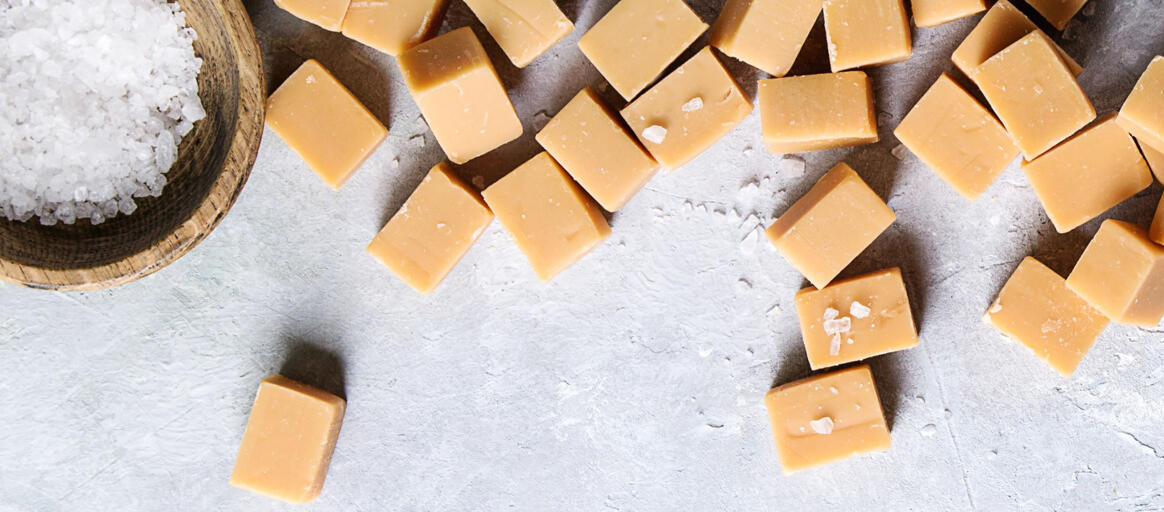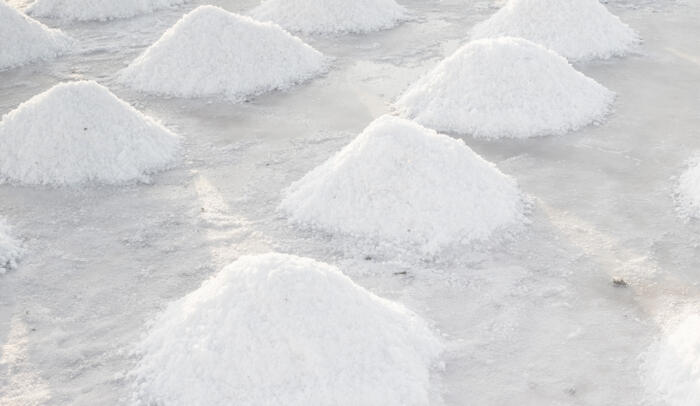Coarse sea salt and fleur de sel: what’s the difference?
'Coarse sea salt' and 'fleur de sel' are often used interchangeably, yet they are not synonyms. This article explains the most important differences between these two types of salt. Both coarse sea salt and fleur de sel are extracted from sea water and have a coarse grain structure. But that is where the similarities between the two end.

Coarse sea salt has a dry, hard and nicely defined grain. Fleur de sel has a moist and soft grain structure.
What is coarse sea salt?
Coarse sea salt has a grain size between 1 and 6 mm (or 1000 to 6000 μm (with μm referring to microns)). It is produced on a large scale and therefore relatively inexpensive. The refining process consists of washing, drying and sieving. The result is a dry, hard and nicely defined grain. Most consumers use coarse sea salt for preparing dishes with a salt crust, adding the salt by grinding it with a salt mill. The food industry mainly uses coarse sea salt in smokehouses, for brine production and for seasoning snacks, fish, meat, … .
The difference with fleur de sel
Fleur de sel typically has a grain size between 0 and 4 mm (0 and 4000 μm). It is harvested manually from the top layer of the salt pan and is not processed afterwards. As a result, production is considerably limited – which explains why this type of sea salt is relatively expensive compared to coarse sea salt. Its moist and soft grain structure are what sets fleur de sel apart, making it unsuitable for salt mills. Fleur de sel gets its unique structure and characteristic soft taste from its high mineral content (calcium and magnesium). Chefs often turn to fleur de sel to add a finishing touch to their dishes.
An overview of the main differences:
| Coarse sea salt | Fleur de sel |
| Large scale production | Harvested manually (limited production) |
| Processed (washed, dried and sieved) | Not processed (dried naturally) |
| Dry | Moist (up to 10%) |
| Hard grain | Soft grain |
| Relatively cheap | Relatively expensive |
| Very suitable for salt mills | Not suitable for salt mills |
